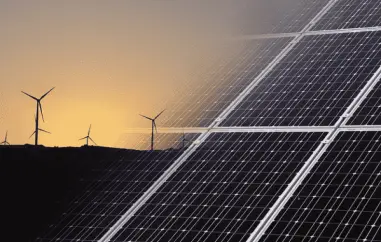Tesla wants to open its charging stations to everyone
Tesla CEO Elon Musk is always good for a surprise. Now, in response to a request from an interested party, he has written on Twitter that Tesla will also open up its fast-charging pillars to the competition. "We designed and built our own columns, there was no example or standard at the time because Tesla was the only manufacturer of long-distance electric cars. Keeping this in mind, we will open our network of Superchargers to electric cars from other brands by the end of the year," Musk writes.
Whether this will initially apply only to the U.S. market or immediately to all of the approximately 25,000 pillars around the world is something he leaves open. A company spokesman who was apparently also surprised by the announcement told the F.A.Z. that more details were not yet known and that information would be provided in due course. It is therefore also unclear what the intention behind this is. Selflessness is hardly to be assumed, possibly Musk is interested in the user data. In any case, the release would be a considerable step, since there are often a dozen Tesla charging stations per location along the highways and only one or two stations of the competition.
As the number of vehicles increases, the threat of waiting times adds to the well-known hurdles of electromobility. This has also recently attracted the attention of German Transport Minister Andreas Scheuer (CSU), who reported in mid-June on his efforts to convince Tesla, among others, to open up its existing infrastructure.
Tesla has so far outperformed all other providers with its network of fast-charging stations along the highways. At last count, 6039 Superchargers were in operation at 601 locations in Europe. Ionity's competitors have 358 charging parks in operation and have set a target of 400. When Tesla opened its network in 2013, the average size of a Supercharger site was seven columns. Today, the largest site in Europe, in Nebbenes, Norway, has 44 Superchargers. Tesla also operates one of the largest Supercharger sites in Europe in Germany. In Oberhonnefeld, southeast of the Cologne-Bonn region, there are 40 fast-charging pillars.
Admittedly, the charging and billing processes are different, which raises the question of how third-party customers should pay at Tesla stations in the future. The charging process at stations from providers such as Ionity, EnBW or Allego is usually started via an app, which requires a one-time registration beforehand. QR code readers or a special charging card often also work. In rare cases, credit cards are accepted. There is no staff on site at the stations, so a hotline has to be called in case of doubt.
Tesla takes a different approach. The buyer of the car is registered. The plug of the charging station, which is not equipped with any screen, and the parked car recognize each other, the charging flap on the vehicle opens, plug in, charge. At the end of the charging process, the plug is removed and the charge is automatically billed to the credit card on file. This often works without any problems and is much simpler than the other methods. Only a few of the other manufacturers are considering this billing method.
However, the days when Tesla added a lifetime supply of electricity to the purchase of a vehicle are long gone. It currently charges 37 cents per kilowatt hour. The biggest competition comes from the Ionity consortium, which is backed by Audi, BMW, Daimler, Ford, Hyundai and Porsche, but which deters customers with prohibitively high prices of up to 79 cents per kilowatt hour. At least customers who drop by spontaneously are charged at this rate. With a realistic average consumption of 25 kWh including charging loss, this results in costs of just under 20 euros per 100 kilometers. Any diesel and most gasoline engines can do that cheaper.
It gets cheaper if you sign a contract; the tariff jungle is similar to that of mobile phone providers. The price per kWh then usually settles around 30 cents, but Volkswagen, for example, adds monthly basic fees of 10 to 17.50 euros, depending on the model. Customers of competitors often cannot use the other network unless they use a platform like Plugsurfing, which then charges a commission for its services.
What they all have in common is charging performance and thus charging times that deviate from the promised standard values in reality. Tesla is no exception. There are two versions of the Supercharger fast-charging stations: V2 is the older and slower version, and V3 is the newer and faster version. The peak power of the V2 Superchargers, which are most widespread throughout Europe, is now 150 kW. V3 Superchargers reach 250 kW. Ionity manages up to 350 kW. But it depends on how fast the car can absorb the electricity. The brand-new electric S-Class from Mercedes-Benz, called EQS, can manage 200 kW, and the Porsche Taycan 270 kW.
Tesla's base Model 3 can charge at 170 kW, while the more expensive models allow up to 250 kW. How fast the current flows also depends on the weather conditions and whether the battery has been sufficiently preconditioned during the journey, which is usually controlled automatically after the destination is entered into the navigation system. As a rough guide, depending on the model, a range of 100 to 250 kilometers can be recharged along the highway under good conditions within 15 minutes. Provided that a pillar is free.










































